With streets packed with automobiles, grayscale buildings both tall and small, and pedestrians hurrying about their day, Seoul is the very model of a modern metropolis. But amidst all the hurly-burly, “Korea House” represents a more traditional take on the country, like a scene from a bygone world. Nestled in natural splendor, the elegant and refined Hanok (traditional buildings) in the complex offer a smorgasbord of pleasures capable of stimulating all the senses, including authentic Korean cuisine prepared with tender loving care.
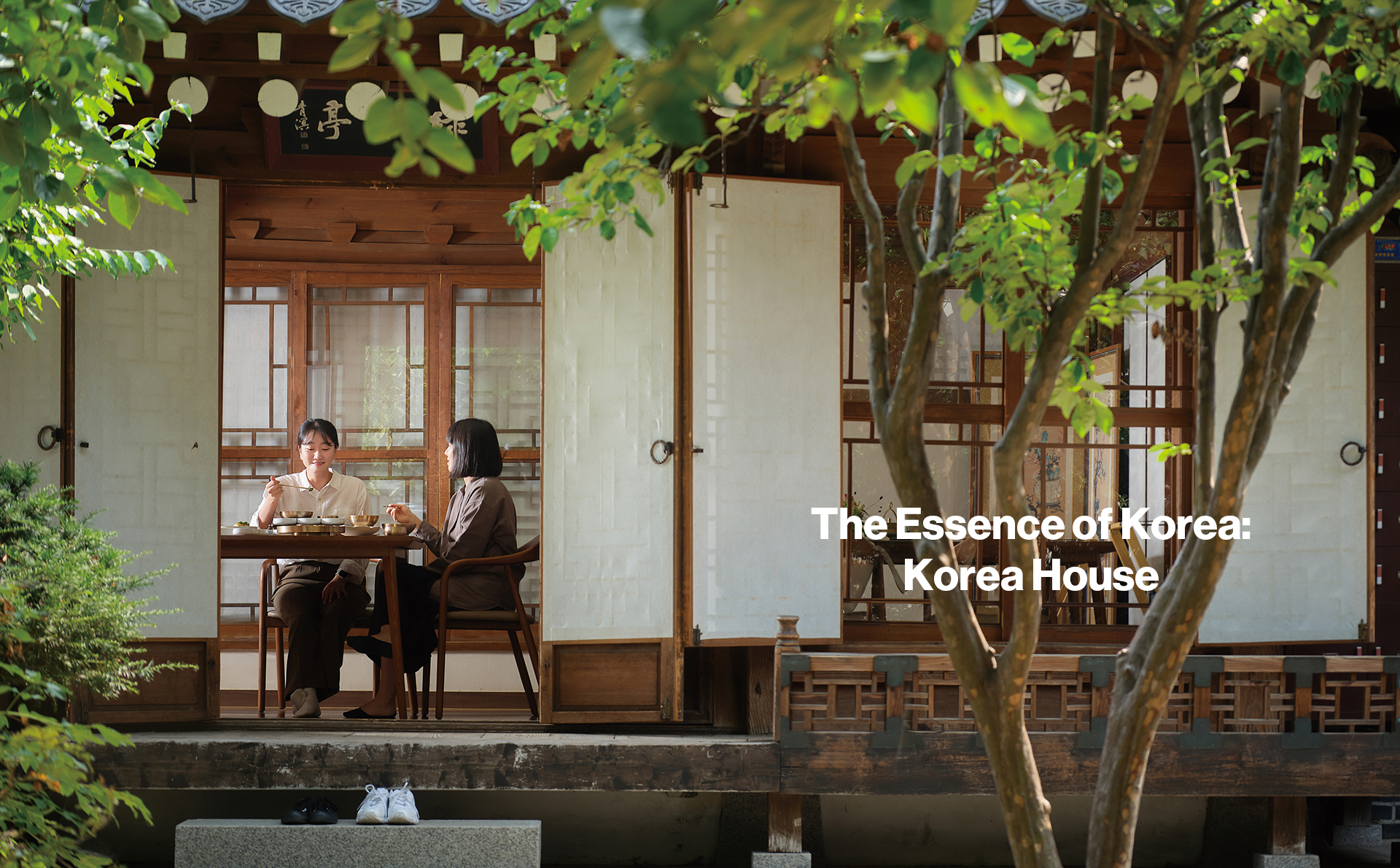
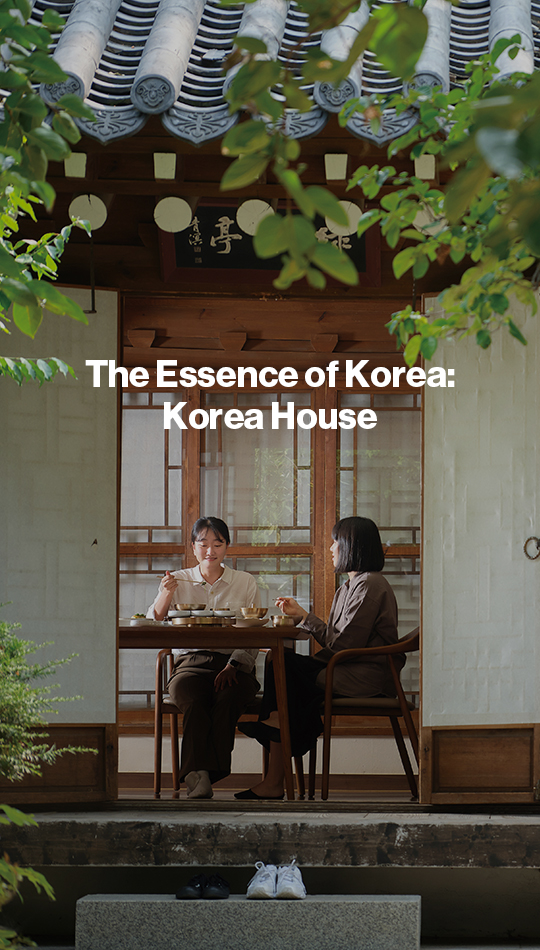
Writer. Kim Da Un
Taste of History and Tradition
Chungmuro Station, where “Korea House” is located, is just three subway stops from Seoul Station. Once you weave through the bustling crowds underground and reach the ground, all it takes is a three-minute walk from the station to arrive at the complex. That background buzz of the city gradually fades until you arrive at the perfect tranquility of Haeringwan, the first Hanok in the Korea House complex. Visitors are greeted by a magnificent sight: powerful columns planted in the ground and a black tiled roof holding up the blue sky.
Korea House dates back to 1957, when it was built to entertain distinguished visitors from overseas. It underwent renovations in 1980 and was later repaired and expanded, making it the facility we see today. In the past, only an exclusive clientele was allowed through its doors, but today, anyone can come to experience Korea’s diverse range of cultural offerings. Among the various programs available here, Korean Royal Cuisine Fine Dining is particularly popular.
 © Korea House of Korea Heritage Agency
© Korea House of Korea Heritage Agency
Upon entering Haeringwan for your fine dining experience, you will be guided by a staffer dressed in Hanbok (traditional attire). Follow the staffer across the courtyard and up a staircase that is reminiscent of a walking through a verdant grove. At the top of the staircase, three cozy cabins await. Ugeumheon, Nogeumjeong and Cheongujeong, as they are called, serve up the finest Korean fare at Korea House.
Once you have taken your seat, the courses are brought out in prompt succession. Each dish was made possible by painstaking research by Korean culinary masters. Dishes lovingly crafted by Cho Hee-sook, who has been dubbed the godmother of Korean food, and Kim Do-seop, a Korean Food Research Team Leader, have an artisanal beauty. The appetizers, entrees, rice dishes and desserts are all neatly plated, coordinating the colors of each ingredient with the dishes. Diners are left to wonder whether they are gazing upon fine dining, or fine art.
Making these moments particularly memorable are the servers’ descriptions of the dishes being prepared. Those vivid descriptions serve as seasoning for the food set before you. For example, sinseontang is a soup containing the same black-feathered chicken enjoyed by King Sukjong of Joseon Dynasty. Sinseollo (royal hot pot) was a favorite at palace parties because the dish has an inbuilt coal brazier. Nokdupyeon is a tasteful arrangement of steamed chicken and mung beans inspired by tteok (rice cake). Hearing those explanations, it is gratifying to realize you are getting a taste of the history and tradition so treasured by Koreans of the past.
Let’s not forget the flavor, which is inexpressibly exquisite. For foreign visitors who tend to think of Korean food as being a spicy, salty and sweet assault on the tastebuds, a meal here is sure to erase any such misconceptions.
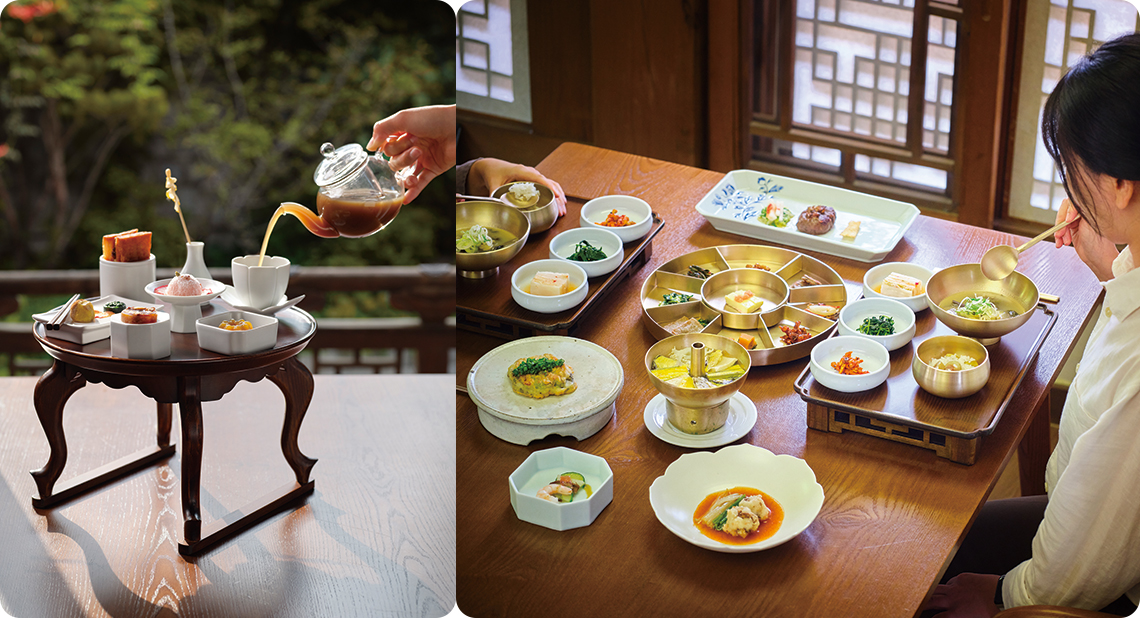 (Left) © Korea House of Korea Heritage Agency
(Left) © Korea House of Korea Heritage Agency
The delectable flavor of rare ingredients sourced from around the country goes well with the understated seasoning and sauces, maximizing the charm of Korean cuisine.
Fascinatingly, the menu is updated each season. So no matter how often you go, you can count on a novel experience. Various courses are on the menu, each composed of different dishes, so diners are spoilt for choice. Options include Korea House Jeongsik (lunch or dinner), Sinseollo Jeongsik (A & B), 1957 Set Menu and even a traditional wedding spread.
As this suggests, Korea House does far more than just serve food: visitors can relish the descriptions of the dishes, the relaxing atmosphere, and the gorgeous scenery viewed through the windows. In short, a fine time can be had here. Few places provide such a rich sensory experience of Korea and its seasons.
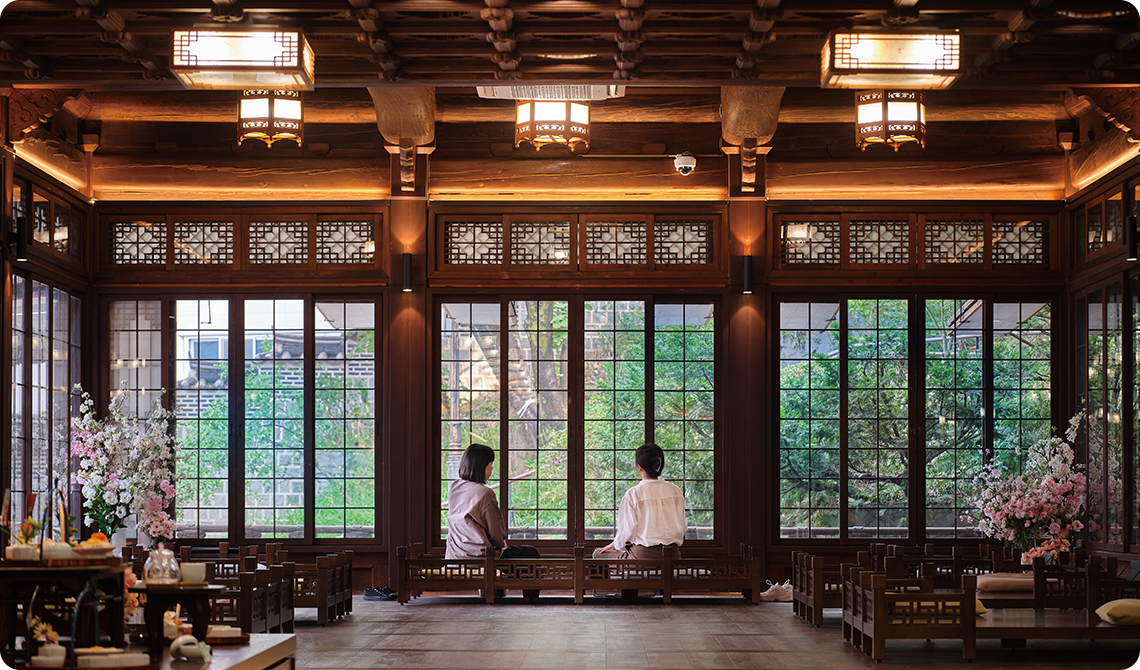
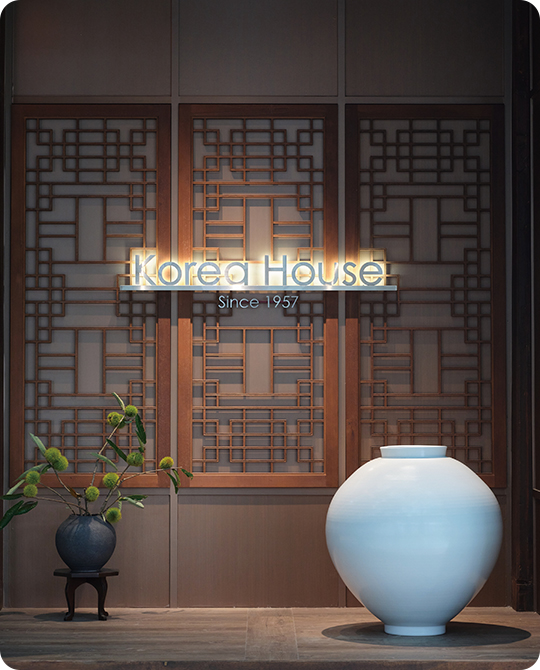
A Traditional Journey Through the Five Senses
Fine dining is not the only special program available at Korea House. Another popular program is called Kohojae, which features a splendid spread of premium palace desserts from Korea House’s flagship Kohojae brand. The venue offers Korean-style floor seating on one side, overlooking the courtyard and a pond stocked with carp, and Western-style tables and chairs on the other side. Visitors can choose whichever is more comfortable. Refreshments are served on a personal table, including rice cake and treats tailored to the season, in this luxurious retreat tucked away in the beating heart of Seoul.
Korea House also hosts traditional performances by the Korea Heritage Agency Arts Group. As one of Korea’s finest dance ensembles, the troupe has been staging traditional Korean performances around the world since its establishment in 1981. There is also a theater at Korea House for those performances. The small size of the theater is actually an advantage, since spectators are sure to get a good view of the performance wherever they sit. Notably, the theater isn’t the only place where performances are put on. For example, they are sometimes a part of the Kohojae program, allowing visitors to savor some song and dance with their refreshments. It may be worth asking whether any special events are planned when making your reservations.

Other programs include traditional weddings grounded in historical research. Starting in October this year, the “Hansik Academy” will also offer opportunities to experience the diverse charms of Korean foods. On one side of Korea House is a modern building called Chwiseongwan which contains a cafe and a store selling traditional handicrafts. So even if you haven’t made reservations for a meal or another activity, Korea House is still worth a visit.
More detailed information about Korea House―including the restaurant menu, the list of alcoholic beverages, and scheduled events―is available on the website. Given the popularity of Korea House’s fine dining and Kohojae programs, a reservation is recommended to ensure you get the most out of your time there. Meals can be reserved through the Catchtable mobile app or by calling Korea House.
If you are curious about Korea or craving a new experience, consider planning a visit to Korea House. While there, you can expect a feast for the senses. After leaving, you may find yourself viewing Korea with a fresh perspective.
